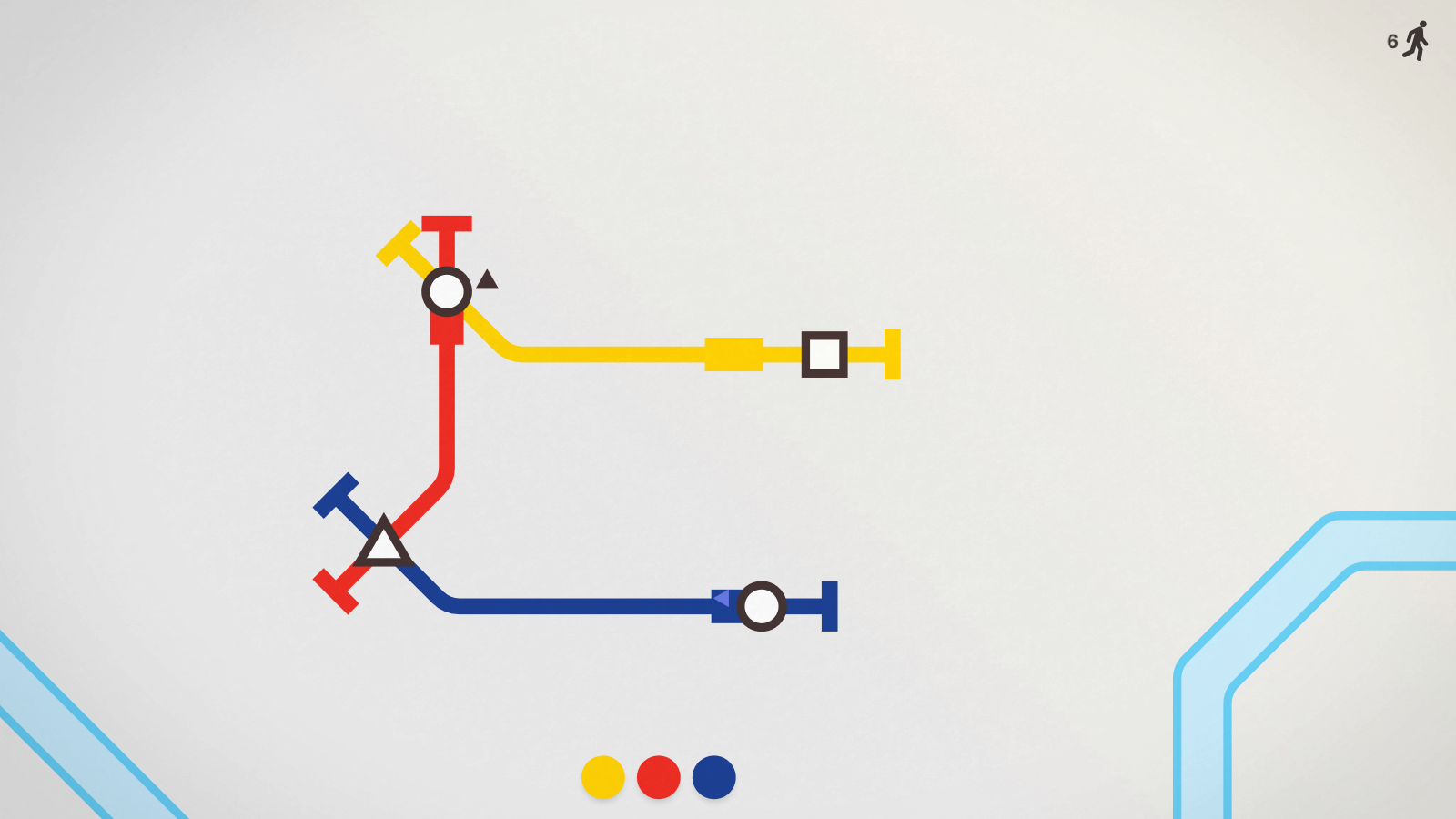Mini Metro review
Personally, 2017 has been a year of change. As I settle into married life and form plans for my future, I’ve had to assess my priorities. Throughout that process, I’ve come to one startling conclusion: I am, slowly but surely, becoming a PC gamer.
Perusing Steam and GOG has become a weekly ritual. (I’m a bargain gamer, no matter the console.) My latest discovery is something that has already claimed 60 hours of my (and my wife’s) life this past month; I foresee that number climbing towards 100 before I can tear myself away.
I picked up Mini Metro for reasons I can’t explain. Sure, it was on sale for $5. And sure, the geometric shapes and primary colors reminded me of Thomas Was Alone (another game I got on a whim). But there is something truly sublime about the aesthetic of Mini Metro, the simple concept, and the puzzle complexity. When I discovered the game, I spent an hour watching videos of some random British YouTuber playing the early levels. And I actually felt moved in a way I didn’t understand.
So, what is Mini Metro? It’s an indie game most people would never give a first glance, let alone a second one. The idea is simple: choose a city and start building metro lines!
Okay, okay, I’ll admit that the premise sounds boring. But this is the age of Bridge Constructor and Cities: Skylines. It's an era where video games incorporate real-life puzzles (in the form of civil engineering) into our entertainment.
Mini Metro is incredibly addicting, as well as visually and aurally pleasing. While the UI is simple enough to teach a toddler, the complexity comes in the form of managing a limited number of metro lines, carts, and tunnels or bridges. Basically, it's about making the most out of the minimum amount of resources.
New stations pop up across the map, and they’re given a specific shape—squares, triangles, circles, diamonds, and so on, becoming increasingly unusual. The basic shapes come less frequently as the game progresses, which quickly creates chokepoints. Passengers wanting to go complex shape-stations form long queues at normal stations and wait for whatever train will get them to their destination; it’s up to the player to figure out how to connect the various stations, moving passengers (who are identified by whatever geometric shape they want to go to) between stations. However, each metro train can only hold six people, and letting a station accumulate more than six waiting passengers starts a timer that—once filled—ends the game.
In-game time passes quickly, and at the end of each week, the player is gifted with one free resource (usually a train) and the option to choose one of two other items. Bridges/tunnels are required to get across rivers and bays; carriages add a second compartment to existing trains; new lines allow the gradual expansion of the metro system, but require an available train; interchanges turn a station into a large hub, allowing it to hold a longer queue. Each piece can prove vital at any moment, and the game decides resource allocation (and new station location/type at random), so no two “matches” will ever be the same.
Here’s a look at how a basic game starts, compared to how it ends:
Each scenario lasts about 20 minutes, although the option to pause at any time (and completely start your lines over from scratch, if need be) can add to that amount. And with more than a dozen cities to build in, plus daily challenges and three different modes, Mini Metro boasts a shocking level of replayability. The existence of global leaderboards adds a sense of pride and aspiration to the game, constantly coercing players to try one more time and reach a new high score; before long, that 20-minute scenario has stretched into two hours of pleasant and peaceful puzzle-solving.
In a nutshell
In case it wasn’t clear, I am very hot on Mini Metro. It’s odd to consider this one of the best games I’ve played in 2017, but given the fantastic reviews (and the 10/10 rating on Steam) I think the community has spoken for me. Mini Metro has the look of a Kindle app for kindergarteners, but don’t let the minimalist UI and bright, pleasant colors fool you—the blend between resource management and designing-for-efficiency will charm you, amuse you, frustrate you, and then addict you. New Zealand developer Dinosaur Polo Club struck gold with Mini Metro—it’s a game I want on every device I own.
Pros
+ Sharp UI
+ Simple concept
+ Endless replayability
Cons
- N/A




